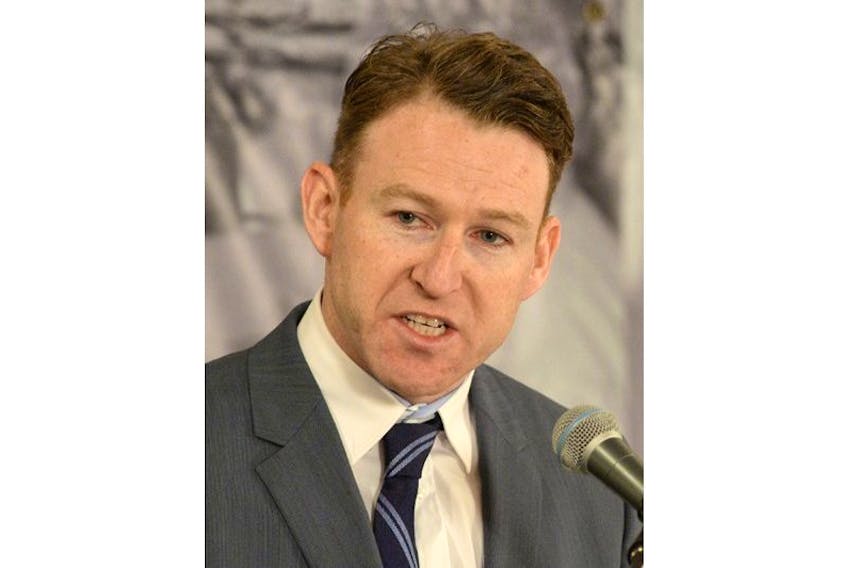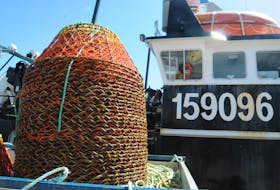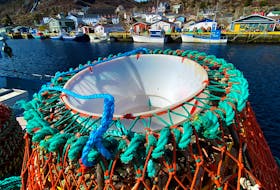Three of seven new marine refuges announced by the federal government Thursday will severely affect Newfoundland and Labrador fishermen, the Fish, Food and Allied Workers’ (FFAW-Unifor) union says.
The Hawke Channel (off the southeast coast of Labrador) and Funk Island Deep (off the northeast coast of the island) marine refuges will be closed to all fishing activity to help conserve seafloor habitat that is important to the recovering northern cod stocks.

The Northeast Newfoundland Slope, formerly known as Tobin’s Point, is an area off the coast of Newfoundland and Labrador just inside the 200-mile limit. It is thought to contain key spawning and breeding grounds, nurseries and refuges for many aquatic species.
The Department of Fisheries and Oceans (DFO) announced the establishment the seven new marine refuges Thursday that it says will contribute an additional 145,598 square kilometres of protected ocean area off Canada’s coasts.
The other four areas include: the Davis Strait off the coast of Nunavut; the Disko Fan off the coast of Nunavut; the Hatton Basin located off the coasts of Nunavut and Newfoundland and Labrador; and the Hopedale Saddle off the coast of Newfoundland and Labrador.
The FFAW-Unifor says it questions whether closing the Hawke Channel and Funk Island Deep, in particular, will in any way protect northern cod habitat.
“During the consultation process, FFAW-Unifor requested information to support DFO’s claim that the Hawke Box and Funk Island Deep closures will protect vulnerable life-stages of northern cod (i.e. pre-spawning and spawning aggregations),” an FFAW-Unifor news release stated.
“To date, the only information provided by DFO is a copy of a 2017 Kincaid and Rose paper, which includes the statement, ‘Overall, although it is uncertain if the Hawke Box has played a role in the rebuilding of the Northern Cod, the evidence is that at a minimum it has done no harm.’ This is not sufficient evidence to close an area to fishing gears with no impact on the species meant to be protected. Harvesters who fished turbot using longline in the Hawke Channel this year reported no cod bycatch. Despite this, these and other harvesters will be shut out.”
DFO notes that bottom trawl, gillnet and longline fishing activities will be prohibited in these areas.
The bottom habitat in these areas, according to DFO, “overlaps ecologically and biologically significant areas that support a high diversity of benthic fish species. For example, the habitat is an important snow crab fishing ground. By protecting the bottom habitat, this closure also protects significant concentrations of groundfish and other fish species.”
Closure of the Northeast Newfoundland Slope — which prohibits all bottom-contact fishing activities — will have a significant impact on turbot harvesters, says FFAW-Unifor president Keith Sullivan. He said the closure will severely limit their fishing grounds.
Sullivan also noted the number of active turbot harvesters in the area has more than doubled since 2013 and the resource is a crucial source of income for these fishermen.
“These area closures were pushed forward despite a lack of evidence that the objectives will be achieved — particularly with respect to northern cod,” Sullivan said. “Most concerning, oil and gas and seismic activity will continue in these areas, calling into question whether these closures will be able to achieve their conservation goals. These closures will certainly shut harvesters out, while letting other sectors in.”
DFO says the dense aggregations created by large, structure-forming cold-water corals in the Northeast Newfoundland Slope can alter bottom currents and provide niche space for organisms.
“Prohibiting bottom-contact gear can protect not only the corals and sponges but also a diversity of other species of fish and invertebrates that use the structural habitat that corals and sponges provide,” DFO stated. “This area can act as a natural refuge area that may contribute to increased species productivity, which in turn could potentially lead to increased abundance within and adjacent to the area.”









